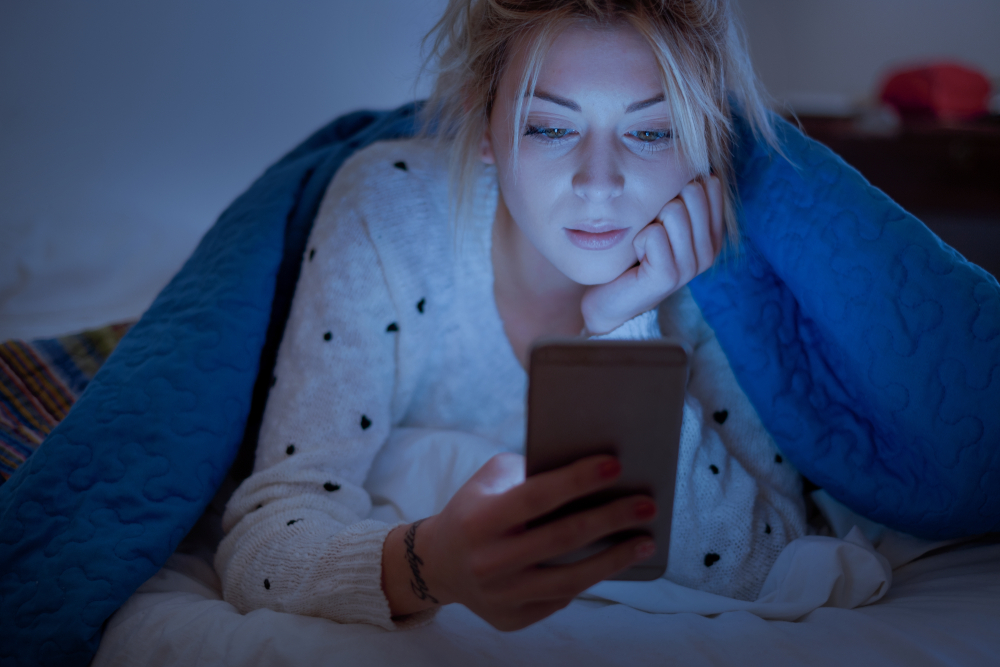Since the dawn of time, humans have depended on the light of day and the darkness of night to regulate sleep cycles and keep our circadian rhythms in check. But now with the advent of electrical lighting as well as screen time, we have to tend to unnatural lighting and the impact it has on our sleep cycles.
Humans have robust rhythms that regulate nearly every aspect of our lives, from our cognition to memory to things like liver function and how the pancreas secretes insulin in response to a meal. For our sleep cycle, we have our circadian rhythm.
When our inner clock or circadian rhythm is off, the body doesn’t function as it should.
“The system is tied together by a central clock in the brain that acts like a master conductor,” says Christopher S Colwell, neuroscientist and professor in the Department of Psychiatry and Biobehavioral Sciences at the University of California, Los Angeles. “If you’re in good health, then the system is working smoothly, but when it’s not there are a number of issues that can arise.”
How Light Affects the Body
Natural light, especially in the morning, is beneficial to cardiovascular health, mood, and getting to sleep at night, says Phyllis C. Zee, director of the Center for Circadian and Sleep Medicine and chief of Sleep Medicine in the Department of Neurology at Northwestern’s Feinberg School of Medicine.
Conversely, light in the evening is associated with an increased risk of obesity, poor metabolic and cardiovascular health as well as poor sleep in general. “Light is important, but the timing of it is also crucial,” says Zee.
The reason for this is twofold. First, light in general is arousing, which can be problematic when you’re trying to fall asleep. But perhaps more importantly, the natural light that occurs in the morning is shorter wavelengths of blue and green light which is beneficial for sleep but only in the morning. Blue and green lights found on devices like smartphones and televisions watched at night have the opposite impact on our circadian rhythms.
Read More: The Importance of Sleep for Your Body
The Best Light for our Circadian Rhythm
As day-active animals, we’re meant to be awake during the day and asleep at night. This is how the system works best, and it’s how we’re built. We have a system of light detectors located in our retina, but don’t project into the visual pathways. Rather, they project straight into our hypothalamus, the part of the brain that controls hormones, says Colwell.
“Their only job is to tell our circadian clock whether it’s day or night,” he says. “And it turns out this system is most sensitive to blue/green wavelengths.”
Light affects the circadian rhythms because it regulates the body’s hormones, especially the release of melatonin.
Read More: How Your Circadian Rhythms Control Your Every Waking — and Sleeping — Moment
What Light Is Best for Sleep?
At night, you want to minimize the light that you’re exposed to because it’s both alerting and it hinders the release of melatonin that helps you get to sleep. Zee says that if your child has a night light, change its color to red or amber, which has less of an impact on sleep compared to green and blue lights. You can also download an app on your phone which changes the light to orange and amber colors rather than blue and green.
Consider blackout curtains and eye shades that are comfortable enough and stay in place all night long. “If you’re watching television at night, try and sit at least six feet away from the TV to avoid getting too close to the light,” says Zee.
Humans now live around an abundance of technology that controls so many aspects of our lives. But our inner clock remains the same as it did when we hunted and gathered. We’re meant to be asleep during the night and awake when the sun comes up in the morning. So until our bodies evolve into something else, abiding by this cycle of light is important to both getting our zzz’s and to staying healthy.
Read More: Noise Colors: Which One Is Best for Sleep?
Article Sources
Our writers at Discovermagazine.com use peer-reviewed studies and high-quality sources for our articles, and our editors review for scientific accuracy and editorial standards. Review the sources used below for this article:
Sara Novak is a science journalist based in South Carolina. In addition to writing for Discover, her work appears in Scientific American, Popular Science, New Scientist, Sierra Magazine, Astronomy Magazine, and many more. She graduated with a bachelor’s degree in Journalism from the Grady School of Journalism at the University of Georgia. She’s also a candidate for a master’s degree in science writing from Johns Hopkins University, (expected graduation 2023). Find her on socials @sarafnovak




















Discussion about this post